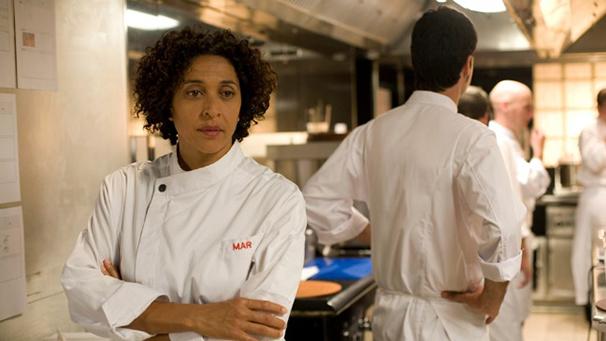
The highlight of eating at a fancy restaurant is often its delectable and varied menu. Director Roger Gual certainly adopted this philosophy in his latest feature film, “Tasting Menu.” With a multicultural cast, engaging plotline and enticing edible smorgasbord, Gual succeeds in creating a satisfying and aesthetically pleasing film relevant to all who enjoy the simple pleasure of a good meal.
Set in an idyllic beach town off the coast of Spain, “Menu” tells a grand tale that involves several interrelated stories that merge at one of the most successful and respected restaurants in the area facing an impending closure.
The characters include a recently separated couple who has decided to reunite and discuss loose ends. Meanwhile, an elderly woman wishes to share a last meal with her deceased husband’s ashes. A group of Japanese businessmen travel to experience the final meal, and a crowd of surly American tourists stumble upon the restaurant’s last presentation.
These tales, among others, constitute an ambitious and interesting narrative structure that both succeeds and backfires. The film sets up a beguiling story from the beginning, but does not follow through with its intentions. The director wanted to grab the audience’s attention, but dropped it somewhere in the middle of the story. Considering the film’s short length — a mere 85 minutes — Gual should have either made a longer film or taken better care to develop the story from beginning to end.
Nevertheless, the audience will easily grow fond of the large ensemble cast. The characters represent a diverse range of nations and cultures. Each personality brings a unique flavor to the film, making the experience all the more entertaining. However, much like Gual’s choice of direction in the narrative, there is a lack of character evolution, which hinders a complete understanding of the onscreen players.
Even with a somewhat underdeveloped storyline, Gual takes incredible care to direct focus toward the most impressive element of his film — the food. Because a large portion of the narrative focuses on characters engaged in meals, the audience is enraptured by the delicious fare. Tasteful shots of each course in the meal provide a refined touch to the already polished atmosphere of the restaurant. Often, the shared experience of eating in this establishment unifies the story better than the nonlinear storyline does.
Though Gual’s direction often dilutes a potential connection between the audience and characters, his film creates a sense of unity wherein viewers can relate to the delight of an excellent meal. From a purely savory perspective, “Tasting Menu” inevitably leaves the audience in a state of bliss.
A version of this article appeared in the Wednesday, April 16 print edition. Nora Blake is a staff writer. Email her at [email protected].

























































































































































